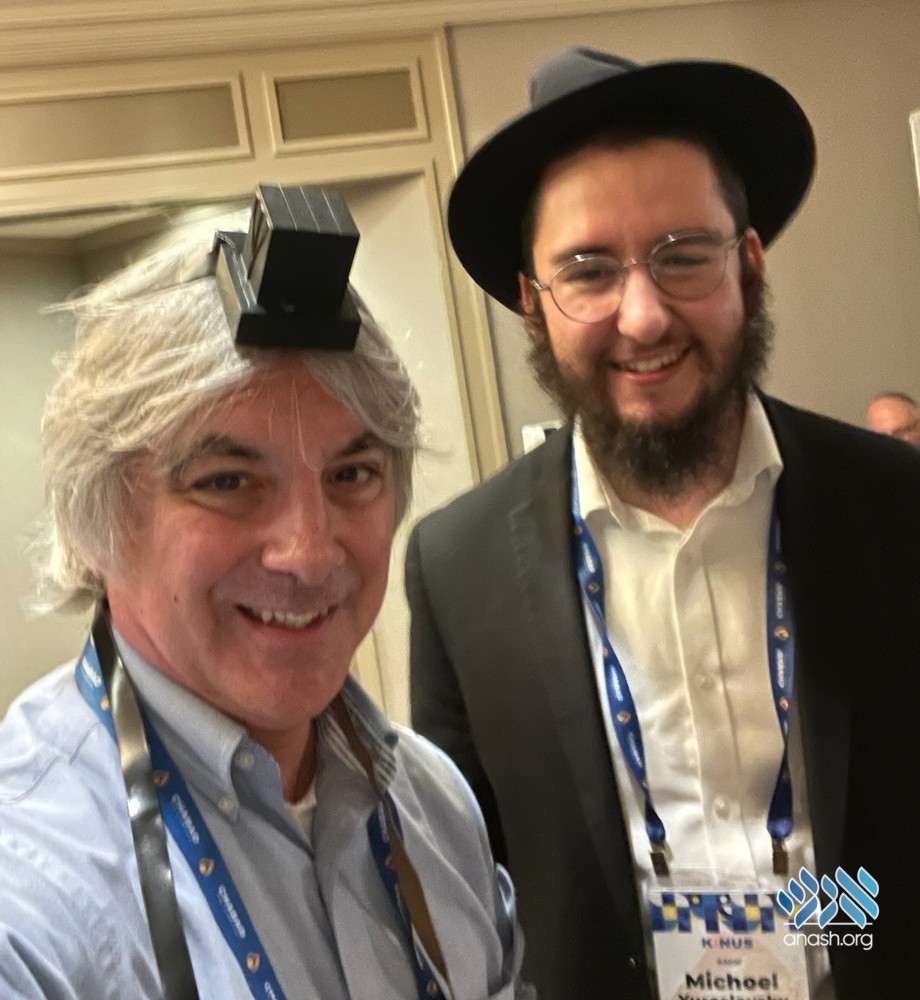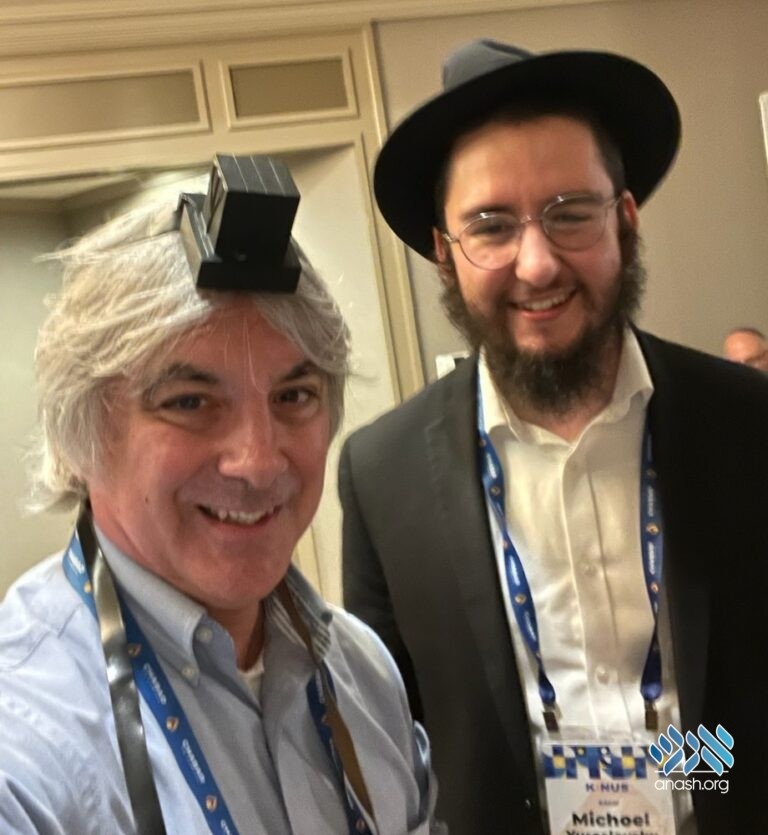ט״ו תמוז ה׳תשפ״ב | July 14, 2022
He Came to Preach Zionism and Ended Up With a Bar Mitzvah
While manning a booth at the Chabad on Campus Kinus a few weeks ago, Michoel, a student representing Hadar Hatorah, got into a conversation with a person from the booth over, resulting in a life-changing experience.

While manning a booth at the Chabad on Campus Kinus a few weeks ago, Michoel, a student representing Hadar Hatorah, got into a conversation with a person from the booth over, resulting in a life-changing experience.
By Michoel Yaroslavsky – A Student at Hadar Hatorah
Before I was Torah-observant, a Chabad Rabbi at the Kotel asked me to wrap tefillin, and I accepted without hesitation. He offered to let me put it on myself, but, at the time, I had no idea how to, so he showed me.
I watched as he placed a black box onto my arm and told me to recite a prayer. He then took out another box, kissed it, and placed it on my head, centering it between my eyes. He instructed me to recite the holy Shema. After reciting the Shema I asked if I could keep it on and bring it to the Wall. He happily agreed.
I poured my heart out at the Wall and asked G-d to help me in all my endeavors. Even though I considered myself an atheist, I couldn’t miss out on an opportunity to speak to G-d. I felt tremendously uplifted from the entire experience.
Fast forward a few years later. A few weeks ago, I had the privilege to represent my yeshiva, Hadar HaTorah at the annual Chabad on Campus Shluchim event in New Jersey. Besides meeting Shluchim, I wasn’t sure what else to expect from the event. I didn’t even bring tefillin, which I usually take with me anywhere I go.
When we found our table, I was surprised to find many Zionist groups were represented nearby, some of which I had been a part of back in college. By hashgacha protis, our table was placed in the middle of all these groups. I had a fantastic opportunity handed over to me.
I came up to one table, where a man was sitting alone. I introduced myself and asked him his name. He looked up and said ‘John.’ His table was beside one of the Zionist groups I had been involved with, so John and I connected right away. He was elated. He said his family survived the Holocaust, and because of how important Eretz Yisroel was to him and his family, John, a lawyer by profession, decided to fight antisemitism on American campuses through his Zionist organization.
I told him I could relate. As someone with family from the former Soviet Union, Eretz Yisroel has always been important to me.
I asked John if he would put on tefillin. He said, “Every Rabbi who’s ever asked me, I’ve said no, but I like you, so I will put it on.”
Fortunately, we were in the right venue to quickly find a pair of tefillin. I put on the shel yad, and told him to recite the bracha. Then, just like the rabbi at the Kotel, I wrapped John’s arm, kissed the head tefillin, and put it on his head.
Before saying Shema, I explained to John that this is the most important prayer for the Jewish People. Before Jews were thrown into the gas chambers r”l, they would cry out Shema Yisroel, to tell G-d that they would never lose faith in Him. John’s expression changed, and he told me that what I said was very touching because of what his family had endured. Then he repeated after me, saying Shema with incredible devotion.
After unraveling the straps on his arm and head, he told me that this was his first time wrapping Tefillin. I hadn’t even asked him if this was his first time since I assumed that an older man would have done it once before. I told John that it was an incredibly emotional moment for me to be able to wrap Tefillin with him for the first time. It brought back my memory of when I wrapped at the Kotel, where I had first felt a deep connection to Hashem.
I then proclaimed to John that the next time we see each other, there would be no more hatred, only us, wrapping Tefillin, in Yerushalayim, with Moshiach very soon.
To learn more about Hadar Hatorah, visit www.hadarhatorah.org or call 718-735-0250.


We appreciate your feedback. If you have any additional information to contribute to this article, it will be added below.